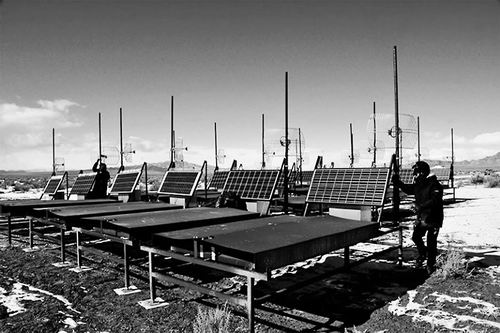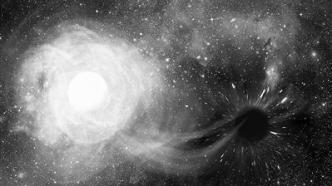

In 2019, researchers inspected the telescope array surface detector in the high desert of Utah, USA. In 2021, an array of telescopes detected the second most energetic cosmic ray particles on record. Image source: The Yomiuri Shimbun via AP
Scientists have detected the most powerful cosmic rays in more than 30 years. But the exact origin of this particle from outer space remains a mystery, with some suggesting it could be produced by unknown physics.
The energy of this puzzling cosmic ray is estimated to be 240EeV (1EeV=1018eV), which is comparable to the strongest cosmic ray ever detected - the "Oh-My-God" particle , the latter measured about 320EeV when it was discovered in 1991. On November 23, the relevant results were published in Science.
Clancy James, an astronomer at Curtin University in Australia, said: "This is amazing, and everyone must want to know what can produce such high energy."
Despite their name, cosmic rays are actually high-energy subatomic particles - usually protons - hurtling through space at nearly the speed of light. In ultra-high-energy states, cosmic rays have energy levels in excess of 1EeV, approximately 1 million times greater than those achieved by the most powerful man-made particle accelerators. Cosmic rays with energies above 100 EeV are rarely found, and the Earth encounters less than one such particle per square kilometer per century.
On May 27, 2021, Toshihiro Fujii, an astronomer at Osaka Public University in Japan, accidentally discovered some unusual signals while conducting a routine data check on the cosmic ray detector telescope array in Millard County, Utah, USA. The signals suggested that the facility's detectors had picked up something of super high energy.
But Fujii was skeptical at first. "I thought there was some kind of bug or flaw in the software," Fujii said. "I was surprised, but the measurement results were consistent with those produced by ultra-high-energy cosmic rays." Scientists named this system after the name of the Japanese sun goddess - "Amaterasu" Particle naming.
But when the Fujii team tried to figure out where the energy spike came from, they found nothing. Ultra-high-energy cosmic rays usually travel relatively smoothly through space because they don't bounce off magnetic fields as strongly as low-energy cosmic rays, making it easy to pinpoint the star, black hole, or galaxy to which it belongs.
However, the calculation results of the Fujii team are that it originates from a vacuum-like region where almost no galaxies exist. The researchers also tried matching the cosmic rays to possible source galaxies and objects outside their arrival direction, but neither seemed to fit. "Nothing," Fujii said.
James said one explanation is that models estimating how magnetic fields affect cosmic ray paths may be incorrect and need some adjustments. If so, Amaterasu may have come from a slightly different direction than what the team calculated. "We thought our estimates were accurate, but maybe we were wrong," James said.
Another possibility is that ultra-high-energy cosmic rays are produced by unknown physical processes that allow them to travel much farther than thought, said Jose Bellido Caceres, an astrophysicist at the University of Adelaide in Australia. "This could be a new kind of physics," added Bellido Caceres.
The Fujii team is upgrading the telescope array to increase its sensitivity to four times its previous level. This will allow researchers to capture more rare ultra-high-energy cosmic rays and track their origins more precisely.
Related paper information:
https://doi.org/10.1126/science.abo5095

You have made your point quite clearly!! web page Position certainly used!. casino en ligne You expressed it terrifically! casino en ligne Whoa all kinds of amazing facts. casino en ligne You actually expressed that very well. casino en ligne You actually suggested it fantastically. casino en ligne Thank you, Numerous tips! casino en ligne Kudos, A lot of info. casino en ligne Regards, I like it! casino en ligne Many thanks. I enjoy this. casino en ligne